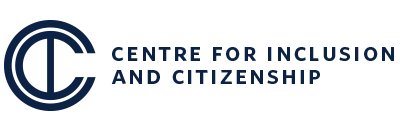We are pleased to share our 2021 – 2022 Annual Report.
 Directors’ Message from Rachelle Hole & Tim Stainton
Directors’ Message from Rachelle Hole & Tim Stainton
Each year as we sit down to write our annual report, it provides an opportunity to reflect on all of our activities. Again, it has been a busy year with numerous continuing projects as well as new research projects with both longstanding community partners as well as new partnerships. But this year, as reflected in Dan’s message, it’s been a time to reflect on the role of the Institute: where we have been and where we hope to go in the future.
The UBC Strategic Plan’s Vision is: “Inspiring people, ideas and actions for a better world.” It further highlights three themes that are key opportunities for transformational change: inclusion, collaboration, and innovation. The collective work of the CIIC clearly aligns with this vision and demonstrates engagement with these three themes. The CIIC envisions a society that acts to achieve lives of quality for all citizens and inclusion, collaboration, and innovation are evident in our research, learning, and knowledge exchange.
The Institute is a unique entity at a university in that our origins began in community where community partners identified the need for an entity to conduct research to inform policy and practice in the community living sector. This legacy informs our work as it speaks to the importance of collaborations and partnerships provincially, nationally, and globally. Through our impact on policy and practice we aim to advance the inclusion and full citizenship of self-advocates and their families, and their supporters. Self-advocates, family members, community stakeholders (e.g., service providers), policy makers, and government partners play key roles in our work. One example is the Transitioning Youth with Disabilities and Employment Project (see page 25). Moreover, this project is an example of our commitment to attend to issues of diversity. For example, one key priority of the TYDE Project is to ensure we are inclusive of Indigenous youth and families, and embedded in the design is a commitment to attend to other factors of diversity such as gender, ethnicity, geographic diversity, socioeconomic status, and more. Another example of inclusion and collaboration is Tim and Jennifer’s work with The Royal Society of Canada on Covid-19 and intellectual disability where they contributed their ideas but also, in consultation with self-advocates, ensured a plain language version of the report was available.
Partnerships and collaborations are vital to the success and impact of the CIIC. These collaborations provide opportunities to mentor trainees (e.g., graduate students) and junior scholars across both campuses, and expose them to the incredible and important work of the sector. For example, the past two years we have had UBC students work with the Self Advocate Leadership Network. Students who have been involved gain valuable insights about inclusion including the importance of plain language. The role of self advocates as mentors, advisory board members, co-presenters, co-researchers is highly valued, and we strive to do better with our practices of inclusion and creating information that is accessible and useful to all our stakeholders and partners.
While in our work we often respond to funding opportunities, we are committed to engaging in work with real impact. As such, we want to be responsive to community stakeholder needs and requests to the best of our ability.
So, this year we want to thank all of you who invest and partner with us in this important work. It makes our work so enjoyable and contributes to the impact of the CIIC. Finally, we want to thank our advisory board members (current and past) for their contributions and direction as we continue to grow as an institute.
